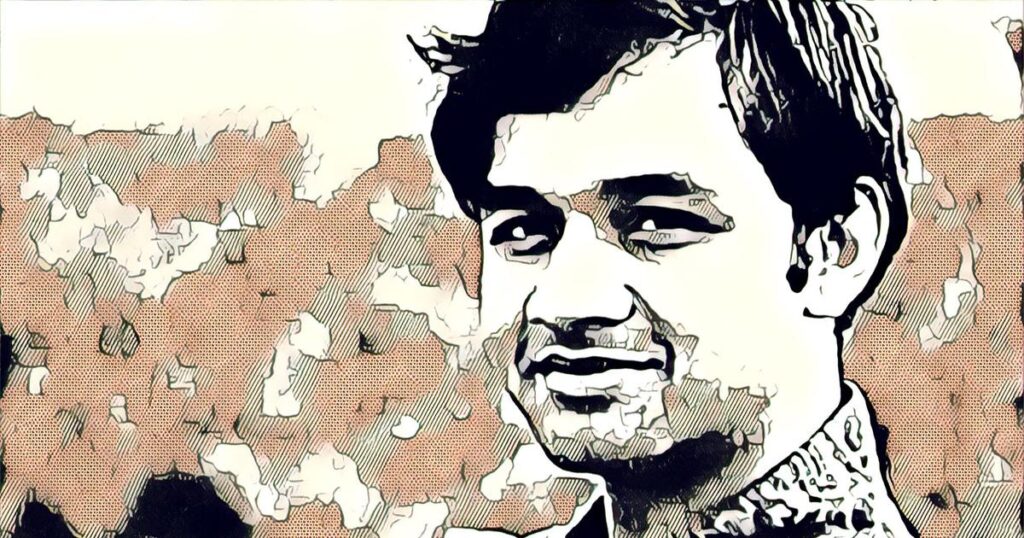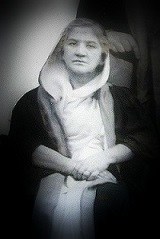JAMMU & KASHMIR / NEW DELHI / U.S.A :
An excerpt from ‘A Map of Longings’, by Manan Kapoor.

In Delhi, Shahid also became aware of the city’s Mughal and colonial history, and was impressed by its architecture. In the early ’60s, the Mexican poet Octavio Paz had visited New Delhi and had been charmed by its architecture. He wrote numerous poems about the city and about all that he had witnessed here. He found Delhi’s “aesthetic equivalent” in “novels, not in architecture”, and to him, wandering the city was “like passing through the pages of Victor Hugo, Walter Scott, or Alexandre Dumas”.
Paz’s gaze, wherever he went, was directed inwards. For him, all the experiences, including the splendour of the Mughal architecture that attracted him, were revelatory and enlightening in one way or the other. In his book In Light of India, he called Delhi’s architecture “an assemblage of images more than buildings”. It was quite the same for Shahid who, after nineteen years, had returned to the city of his birth.
He was a student at Delhi University, which wasn’t too far from Old Delhi or what was once known as Shahjahanabad, the walled city of Delhi constructed by Shah Jahan – the emperor who “knew the depth of stones, / how they turn smooth rubbed on a heart. / And then? Imprisoned / with no consoling ghosts…”
The tomb of Amir Khusro at Hazrat Nizamuddin in Delhi was a place that had attracted Paz. In “The Tomb of Amir Khusro”, he wrote: “Amir Khusru, parrot or mockingbird: / the two halves of each moment, muddy sorrow, voice of light. / Syllables, wandering fires, vagabond architectures.”
The tomb attracted Shahid as well when he visited the dargah in Delhi almost a decade later: “I come here to sing Khusro’s songs. / I burn to the end of the lit essence… / The muezzin interrupts the dawn, calls / the faithful to the prayer with a monster-cry: / We walk through the streets calligraphed with blood.”
In Delhi, Shahid found poetry at each turn. In an interview with First City in 1991, he said: “For me the lanes of Delhi, particularly the ones leading to and from the Jama Masjid, hold a dazzling value. When I used to go to Kareem restaurant or was having nihari or kulfi on the steps of Jama Masjid, I used to imagine that I was living in the days of Ghalib.”
Unlike Paz, who as an outsider in Delhi could only adore the architecture, Shahid also saw history in the city. Although he had been exposed to the historical forces that had shaped Kashmir, it was in Delhi that he discovered, for the first time, history in brick walls, minarets and on the streets. In “The Walled City: Seven Poems on Delhi”, he wrote about Jama Masjid:
Imagine: Once there was nothing here.
Now look how minarets camouflage the sunset.Do you hear the call to prayer?
It leaves me unwinding scrolls of legend
till I reach the first brick they brought here.
How the prayers rose, brick by brick?
Shahid’s poetic concerns were largely a constant for most of his life, and are palpable in these early poems. His engagement with history, which he deals with as both an insider and outsider, reflects his tenderness and the experience of a poet who belongs to multiple worlds and none at the same time.
For the next three decades, he wrote about loss and the memory of loss, the burden of history and injustices of all kinds. The seeds of these poetic concerns were sown during his childhood, mostly at home. However, they were nourished in Delhi, by the city’s air and its history, which Shahid couldn’t ignore.
In the poems from Bone Sculpture and In Memory of Begum Akhtar, Shahid emerges as a poet who feels deeply about South Asian culture as well as politics. Both the collections are influenced by Delhi and reflect an understanding of history. From a very young age, he was aware of the historical movements, the revolutions and leaders who had shaped the world he lived in.
In time, he established his position as a poet of witness with the publication of his poem “After Seeing Kozintsev’s King Lear in Delhi”, which talks about the last Mughal emperor Bahadur Shah Zafar. In the poem, Shahid makes a conscious choice as he turns from King Lear and looks at Zafar, turning away from fiction towards fact, from the stories of the colonisers to the histories of the colonised.
This turn marks an important moment in Shahid’s poetry, and it is from here that his poems and sensibility come to be defined by a certain post-colonial outlook, where he sheds light on those whom history had ignored:
I think of Zafar, poet and Emperor,
being led through this street
by British soldiers, his feet in chains,
to watch his sons hanged.In exile he wrote:
“Unfortunate Zafar
spent half his life in hope,
the other half waiting.
He begs for two yards of Delhi for burial.”He was exiled to Burma, buried in Rangoon.
In the late ’60s, when Shahid joined Hindu College, the syllabus was still under a colonial shadow and predominantly included English writers like John Milton, Shakespeare, Thomas Hardy and the Romantic poets. Although he had read all their works and admired most of them, Shahid’s language was very different from the poets that were taught to him.
Shahid once said that he was often aware that the music of his language was different, that he was able to bring certain flavours to English poetry in India for the first time, which he believed was a result of the combination of Hindu, Muslim and Western cultures in him, and the fact that he had a “natural and profound inwardness with them”.
His use of these cultures was not exotic – unlike, say, Eliot importing the word “shantih” in “The Waste Land”. Shahid felt them in three languages and didn’t have to “hunt” for subjects. In an essay written much later, he reflected on English poetry in India and said that Satyajit Ray had accomplished what he had because Ray was using a specifically Indian idiom for the first time on celluloid.
“I can use the Indian landscape, and the subcontinent’s myths and legends and history from within, and I can do so for the first time in what might seem like a new idiom, a new language – subcontinental English.”
Salman Rushdie’s case was similar. Ray, Rushdie (as well as Shahid when it came to English subcontinental poetry) had an abundance of history, tradition and what seemed like an endless river of subjects that they could explore. Shahid had, in fact, acknowledged that if the novel had done it, poetry couldn’t be far behind.
Little did he know that along with poets like Arun Kolatkar and AK Ramanujan, he would become a proponent of English writing in the Indian subcontinent, a poet who had tradition and the flavour of the soil in his bones. In an essay written much later, he reflected on how the English language was changing in the subcontinent:
The colonisers left fifty years ago, and subcontinental writers, particularly poets, can breathe greater confidence into Indian English (as Walt Whitman did into American English) not only because they belong to what, with qualifications, is the international-ism of the English language (in this context, note the awarding of the Nobel Prize to Patrick White, Wole Soyinka, Nadine Gordimer, and Derek Walcott) but because, by re-creating the language, by infusing into it all the traditions and forms at their command, they can make subcontinentals feel that they do not have to seek approval for any idiosyncrasy in syntax and grammar from the queens, Victoria or Elizabeth (the second, of course). As a matter of fact, for all kinds of reasons, it is gratifying to give an insult to the English language.
By the ’60s and ’70s, some young Indian English poets had started emerging on the literary scene, much of which had to do with Purushottama Lal, the founder of Writers’ Workshop, Calcutta. The publishing house started by Lal, which operated out of the library of his residence in Calcutta, had turned into a platform for publishing Indian writing in English. It published the first works of such poets as Nissim Ezekiel, Vikram Seth, Ruskin Bond and AK Ramanujan. Lal also published Shahid’s first two collections of poetry, Bone Sculpture and In Memory of Begum Akhtar.
Yet, in the ’90s, Shahid wrote in an essay that the “Indo-English scene” during those decades was “thoroughly empty and corrupt” and that “in some quarters” it continued to remain the same, singling out Lal’s publishing house, which he said had been functioning as a near vanity press.
In his essay “Indian Poetry in English”, Shahid wrote, “Educated Indians generally speak three languages, write in two, and dream in one – English.” Although they were written in English at a time when the chutnification, or what he called the biriyanisation, of the language hadn’t taken place, Shahid’s poems were indeed very Indian in nature and in terms of the subjects they dealt with.
The English language came to him naturally, while his ideas were deeply rooted in the culture of the subcontinent. Shahid’s English wasn’t the Queen’s “propah” English but a product of the biriyanisation of the language. Although as a poet he was slowly learning, poems like “Bones”, “Introducing”, “The Walled City” and others not only marked the beginning of a poetic career but also a poetic style that was steeped in a sense of loss, language and the history of the subcontinent. When at last, in the late ’60s, he met Begum Akhtar, his appreciation for the traditions of the subcontinent grew and his poetry changed in unimaginable ways.

Excerpted with permission from A Map of Longings: The Life and Works of Agha Shahid Ali, Manan Kapoor, Vintage.
source: http://www.scroll.in / Scroll.in / Home> Book Excerpt / by Manan Kapoor / June 03rd, 2021










